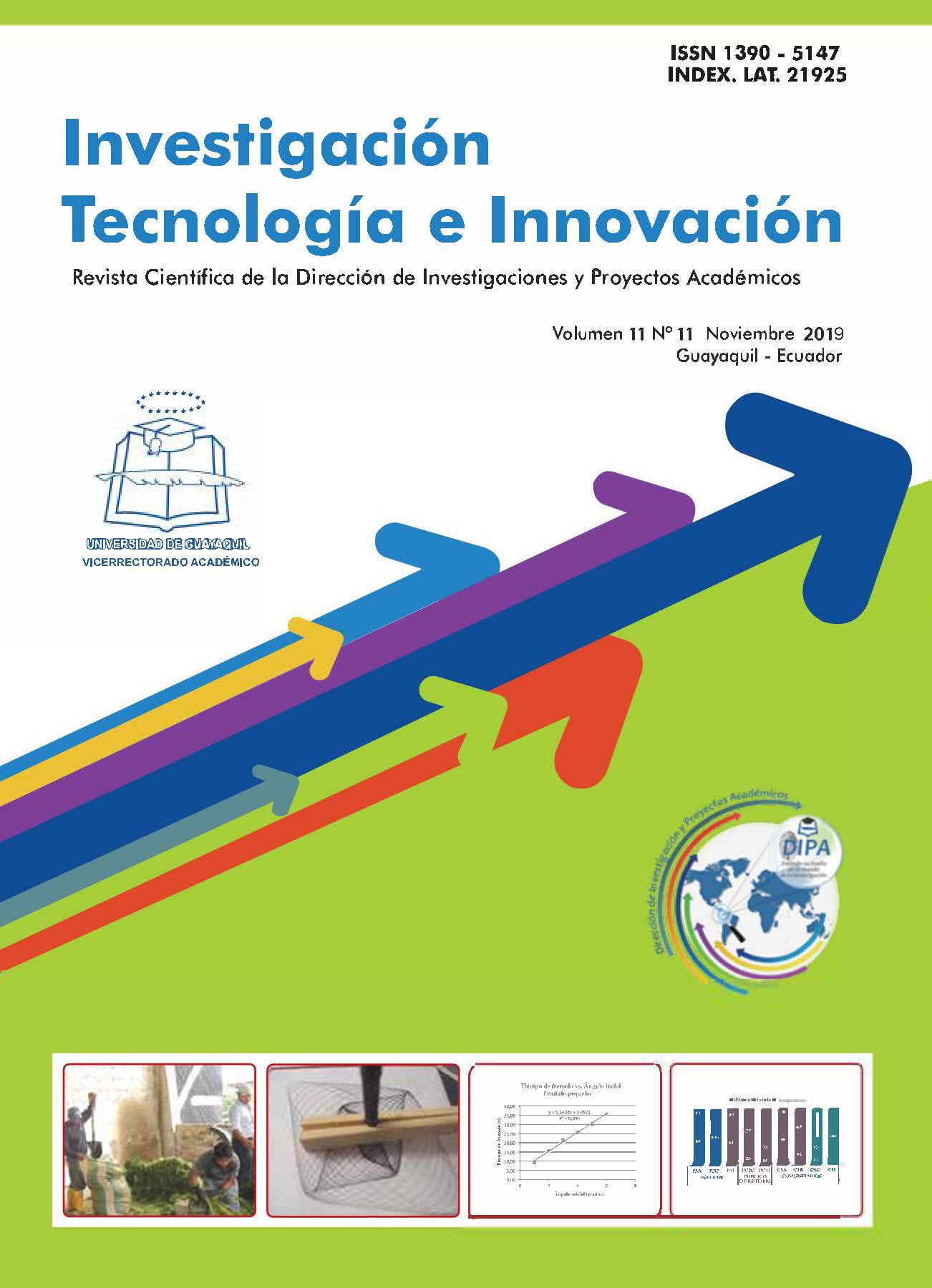Statistical model to know the migration factors in Ecuadorians
DOI:
https://doi.org/10.53591/iti.v11i11.172Keywords:
Country, Contingency Table, Chi-Square, Statistics, Ecuador, Bivariate Analysis.Abstract
The objective of this research work is to make known what are the main causes that cause migration in Ecuador, taking into account the factors that drive the Ecuadorian population to take migration as a collective strategy to determine the causes that a person you have at the time of making the decision to migrate to another country; For this study, the use of statistical and probabilistic tools as a computer instrument to obtain the results is disclosed; such as contingency tables and their statistical test such as chi square. A very powerful and free access tool will be used for the analysis of statistical data, such as R; in order to show the linear dependence of each of the variables. Based on the data analyzed, it is concluded that 90% of Ecuadorians migrate because they have a foreign residence and also those who do not have a specific occupation represent 28%.
References
C. López-Calleja Hiort-Lorenzen, «Tablas de Contingencia y Modelos de Regresión Logística aplicados a cuatro rutas migratorias a partir del medio rural en Cuba», Población y Salud en Mesoamérica, vol. 12, n.o 1, p. 1, 2014.
A. GONZÁLEZ ROMO y B. RAMÍREZ VALVERDE, «La migración como respuesta de los campesinos ante la crisis del café: estudio en tres municipios del estado de Puebla», Ra Ximhai, vol. 2, n.o 002.
A. I. Canales, «Panorama actual de la migración internacional en América Latina», Rev. Latinoam. Población, vol. 3, n.o 4, pp. 65-91, 2009.
J. P. Lalama Zambrano y K. W. Villa Muzha, «Análisis del nivel de conocimiento, comportamiento y aptitud en sus dimensiones en su educación financiera, que impactan en los comerciantes informales y su incidencia en la toma de decisiones en la ciudad de Guayaquil.», 2021.
D. Lastre, M. P. Santana, y O. L. Tumbaco, «Análisis estadístico de tablas de contingencia y chi cuadrado para medir el flujo migratorio en el Ecuador en el 2018», Ecuadorian Sci. J., vol. 3, n.o 1, pp. 23-30, 2019.
M. Reguant Alvarez, R. Vilà Baños, y M. Torrado Fonseca, «La relación entre dos variables según la escala de medición con SPSS», REIRE. Rev. d’Innovació i Recer. en Educ. 2018, vol. 11, num. 2, p. 45-60, 2018.
F. Q. Ricardi, «Estadística aplicada a la investigación en salud», Obtenido La prueba Ji-Cuadrado http//www.medwave.cl/link.cgi/Medwave/Series/MBE04/5266, 2011.
J. L. De La Cruz-Oré, ?«` Qué significan los grados de libertad?», Rev. Peru. Epidemiol., vol. 17, n.o 2, pp. 1-6, 2013.
L. C. Torres, A. G. Rodríguez, y L. L. D. Rivas, «Factores que inciden en el mal uso de la información en trabajos de investigación científica», Didasc@ lia Didáctica y Educ. ISSN 2224-2643, vol. 7, n.o 4, pp. 57-74, 2016.
L. Cevallos-Torres y M. Botto-Tobar, «Case study: Logistical behavior in the use of urban transport using the monte carlo simulation method», en Problem-Based Learning: A Didactic Strategy in the Teaching of System Simulation, Springer, 2019, pp. 97-110.
L. Cevallos-Torres y M. Botto-Tobar, «Case study: Project-based learning to evaluate probability distributions in medical area», en Problem-Based Learning: A Didactic Strategy in the Teaching of System Simulation, Springer, 2019, pp. 111-122.
L. Cevallos-Torres y M. Botto-Tobar, «Case study: Probabilistic estimates in the application of inventory models for perishable products in SMEs», en Problem-Based Learning: A Didactic Strategy in the Teaching of System Simulation, Springer, 2019, pp. 123-132.
H. González-Galbán y L. I. Herrera-León, «Mortalidad infantil y preescolar en el estado de Baja California: Análisis de condicionantes biodemográficos relacionados con la historia reproductiva de la madre», Población y Salud en Mesoamérica, vol. 12, n.o 2, pp. 28-59, 2015.
E. R. Valencia-Nunez, C. F. Melendez-Tamano, A. T. Valle-Alvarez, J. G. Paredes-Salinas, C. F. P. Salinas, y L. J. Cevallos-Torres, «Virtual classrooms and their use, measured with a statistical technique: The case of the Technical University of Ambato—Ecuador», en 2018 13th Iberian Conference on Information Systems and Technologies (CISTI), 2018, pp. 1-6.
Downloads
Published
Issue
Section
License
Copyright (c) 2019 Erick Aspiazu, Erik Tacuri, Alfonso Vera

This work is licensed under a Creative Commons Attribution-NonCommercial-NoDerivatives 4.0 International License.






